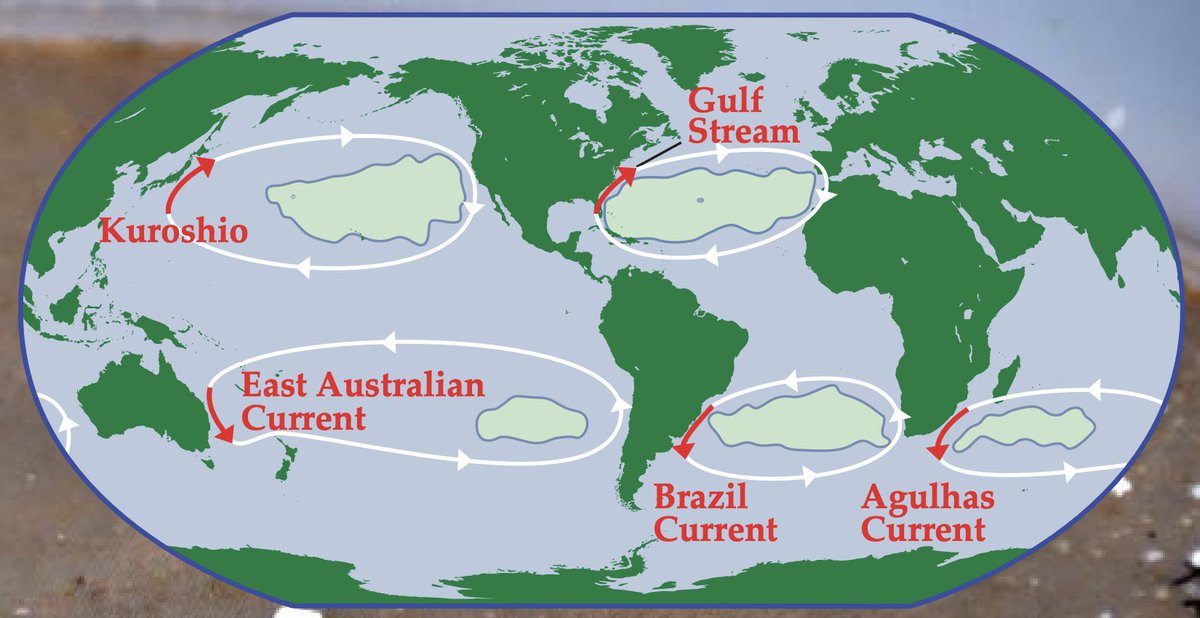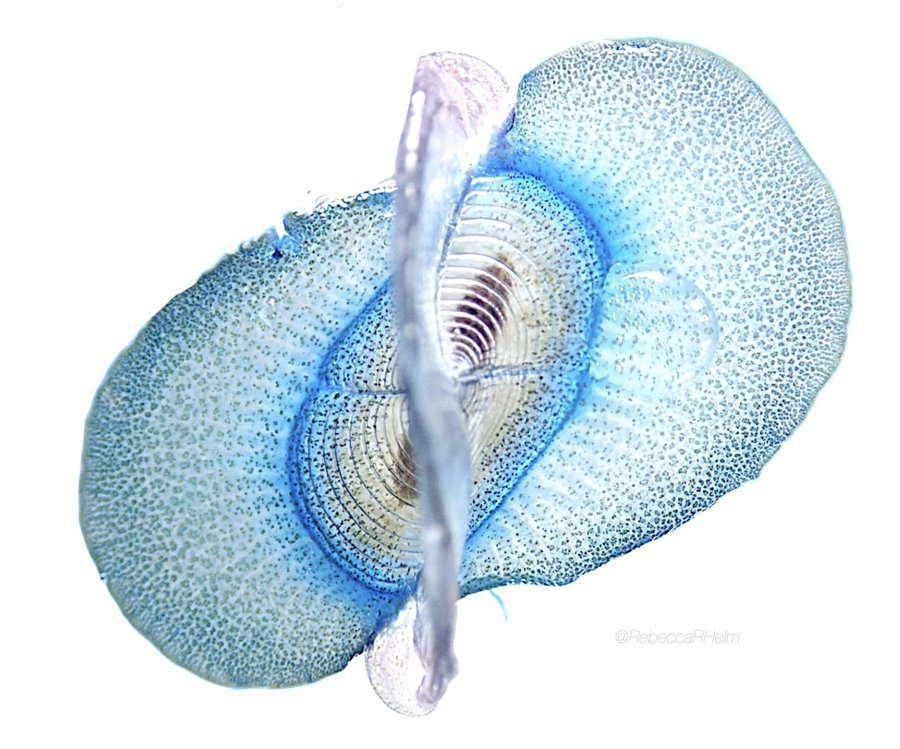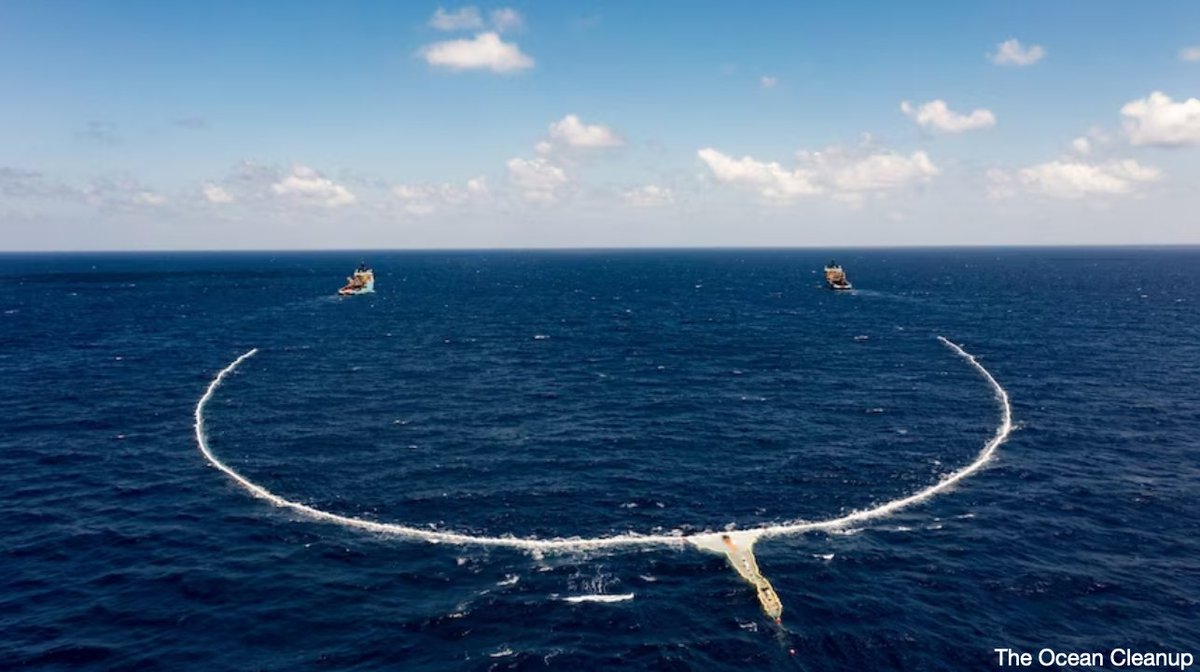OMG it literally took someone SWIMMING FROM HAWAII TO CALIFORNIA to discover this, but wow did we find something shocking in the Great Pacific Garbage Patch... [a thread 🧵]…
New study: plos.io/3LXY3CC
New study: plos.io/3LXY3CC
It started when this guy name Ben Lecomte started swimming. He'd already freestyle'd his way from Japan to Hawaii, and now he was going to California. SWIMMING. And luckily for us… benlecomte.com 

The mission was clear: to swim to and through the HEART of the Great Pacific Garbage Patch. To see what is ACTUALLY out there. One stroke at a time, for months. And while he swam… 

The crew of his support vessel took samples, and our team monitored the location of the patch, guiding Ben right to it. At first, before they entered the patch, those net samples, emptied onto sieves like this one, were pretty empty. But then… 

BAM. They reached the boundary of the patch and there they were. Plastic yes, but also LIFE. Life living out there totally SEPARATE from plastic! Blue floating life, called 'neuston,' that’s been in the pacific for millions of years. This is…
https://twitter.com/PLOSBiology/status/1654188551716720656
An ecosystem hardly anyone studies. Let me introduce you. There are blue button jellies. Flower-shaped jellies that float on the surface and shimmer and pulse, like stars...
Violet snails, who cannot swim and keep from drowning by making a life raft of snail slime. They also eat the man-o-war. And, as cannibals, each other…
All of these animals were more common in the Patch than anywhere Ben swam outside of it. On his swim Ben also encountered the infamous man-o-war...
And their predators, the blue sea dragons, who eat man-o-war and steal their stinging cells. Covering their bodies in armor made from the weapons of their vanquished prey…
There were fish, jellies, even insects! All living on the surface, all DESPITE plastic, totally unknown before. Like a meadow filled with plastic bags. It may look like a dump, but the meadow underneath persists... I mean...
Suddenly, it starts making sense. These animals float just like plastic. Their lives are moved around by the currents and wind, just like plastic. If you look at the amount of plastic and the amount of life, they line up! More plastic, more life. And the birds and turtles... 

But what does this all mean? There's one other Garbage Patch with lots of known floating life. The Sargasso Sea in the North Atlantic. The Garbage Patches are more than just plastic. They're ecosystems and have been for millions of years. And...
📸@SargassoSeaCmsn

📸@SargassoSeaCmsn


there are FIVE major Garbage Patches. What other strange life may be hiding within them? This is why... 

We must stop plastic BEFORE it enters the ocean. Indescriminent cleanup in the middle of the ocean may sound like a good idea, but it could be like bulldozing a meadow. There is life out there, and we know almost NOTHING about it...
https://twitter.com/RebeccaRHelm/status/1653861661118218247
When Ben left the Garbage Patch, that thick meadow of life thinned, and by the time he reached California, the surface was largely empty again. What Ben did is remarkable, not only for his unbelievable power and courage but for what he helped discover...
We need people like this. Be it swimmers or sailors, kayakers or yacht owners, to go into the open ocean and tell us what they see. This is what community science looks like. And you can be a part of it...
Join us from shore, through our global community science program
@goseascience...
@goseascience...
https://twitter.com/RebeccaRHelm/status/1391469432078274560
This much I know for sure: those "Garbage Patches"...they're more than we thought they were. It's time to explore. [End of Thread]
https://twitter.com/RebeccaRHelm/status/1654536756493156357
• • •
Missing some Tweet in this thread? You can try to
force a refresh

 Read on Twitter
Read on Twitter

















